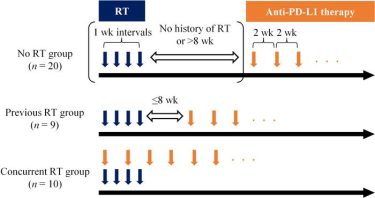Combination therapy effective against canine melanoma
Posted: 26 June 2023 | Izzy Wood (Drug Target Review) | No comments yet
A combination of radiotherapy followed by immunotherapy is a promising strategy for the treatment of oral malignant melanomas in dogs.


Melanomas are the most common oral cancers in dogs. It is highly metastatic and conventional chemotherapy does not increase survival time. Canine oral melanomas are similar to human melanomas; thus, research is being conducted into adapting treatments developed for human melanomas for dogs.
A particularly effective therapy for treating human melanomas is a combination of immune checkpoint inhibitors and radiotherapy. A team of researchers led by Professor Satoru Konnai at Hokkaido University, Japan, has investigated the effects of this therapy in dogs. Their findings were published in the journal Cancers.
“One of the means that tumours employ to protect themselves is by inducing overexpression of molecules that suppress the immune response, such as PD-1 and PD-L1,” explained Konnai. “Immunotherapy that targets these molecules and blocks their function has a response rate of 14.3 percent for canine oral malignant melanoma (OMM). Studies in humans have shown that combining anti-PD-L1 immunotherapy with radiotherapy—where the radiation is focused on the tumour—increases survival in humans, and we wanted to examine if this was true in dogs as well.”
The team analysed data from 39 canine patients with Stage IV pulmonary OMM treated with the anti-PD-L1 antibody c4G12 between March 2016 and September 2021. Of these, twenty had either never been treated with radiotherapy or had not received such treatment for at least 8 weeks; nine had received radiotherapy within 8 weeks prior to c4G12 treatment; and the remaining ten received c4G12 and radiotherapy concurrently.


The 39 dogs in the study were divided into three groups based on treatment strategies (Tatsuya Deguchi, Naoya Maekawa, et al. Cancers. June 1, 2023).
The most important metric the team measured was the overall survival time, the duration between the first dose of c4G12 and death. “The group that had received radiotherapy prior to c4G12 had better overall survival compared to the group that received just c4G12,” Konnai elaborated. “Concurrent treatment had no benefits compared to prior radiotherapy. We also observed that there was no statistical difference between the three groups in terms of side effects from treatment.”
This study shows that sequential treatment of canine pulmonary OMM with radiotherapy followed by c4G12 is a promising antitumor strategy. Future work will need to examine the validity of these findings in larger sample sizes, and will also focus on pinning down the optimal protocol (combination of timing, dose and fractionation of radiotherapy) to increase overall survival.
Related topics
Animal Models, Chemotherapy, Immuno-oncology, Immunotherapy, Oncology, Radiotherapy
Related conditions
Melanoma, oral malignant melanoma (OMM)
Related organisations
Hokkaido University
Related people
Professor Satoru Konnai








